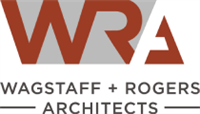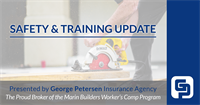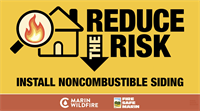HammerLoop Employer for Construction Video
We hope that you will watch this video on what HammerLoop is. We are a new, innovative, and award winning startup designed to connect construction labor and construction employers at a moment's notice, based on trade and location, and in the palm of your hand! Please create your employer profile, and join the future of construction hiring!HammerLoop Employer for Construction Video
Construction Documents: Detailed Technical Drawings by Eric Rogers, Wagstaff + Rogers Architects
Construction Documents: Detailed Technical Drawings During each architectural phase, our goal is to guide our clients with clarity and intention. After Design Development has refined the project into a coordinated, buildable solution, the work transitions into one of the most detailed and technically intensive stages of the entire architectural process. Construction Documents, the third of the 5 Basic Architectural Services. This phase marks the transformation of refined design ideas into the precise,
Marin ROP Construction Seeking Volunteers & Afterschool Instructors
The Marin County Office of Education is seeking skilled tradespeople and educators interested in volunteering or teaching in our high school afterschool Construction ROP Program in San Rafael/Novato. We are seeking professionals to guest speak, conduct demos, assist, or teach. Help students gain hands-on experience as they prepare for a rewarding teaching opportunity in the building trades. If you have experience in carpentry, electrical, plumbing, HVAC, or general construction, we’d love to
Safety & Training Short - Promoting Safe Behavior
Objective: To provide employers with an overview of how to promote safe behaviors in their employees. Unsafe behaviors or decisions are usually contributing factors in incidents. If employees are not aware of the hazards or are not motivated to follow safe procedures, their behavior will expose them to hazards. While employers must put engineering, administrative, and PPE controls into place to protect employees from hazards, it is also essential to promote safe behaviors and a safe environment.Click here
New Reduce the Risk Video by Fire Safe Marin
We’re excited to share a new video featuring MBA member Kazoo Shearman (Shearman Builders), walking through the installation of noncombustible fiber cement siding as part of a targeted wildfire retrofit. In this project, the homeowner focused on the lower portion of the wall—where ember exposure is highest— installing Hardie® siding within their budget. The video breaks down how flashing, fiber cement siding, and weather detailing work together to improve ember resistance and all-weather
Capitol Connection Q&A fo Contractors: 1440
Capitol Connection Q&A for Contractors By Shauna Krause, President, Capitol Services In with the new, out with the old, maybe? A new calendar year ahead often means changes both easy and challenging, so let me help sort some out for you!… Q: I have put off getting my Nevada license until after the New Year because I have heard horror stories about the difficulty of obtaining a General over there. Is there any advice you can give me about the process and what I may want to consider before diving in to
Safety & Training Short: Floods - Health Hazards
Objective: To assure familiarity and understanding of common health hazards present in flooded areas. Floods are extremely dangerous to life and health, even in their aftermath. Everyone involved in response and recovery operations must be aware of the hazards they face. ExhaustionHypothermiaHeat IllnessContaminated WaterClick here to download the training short in EnglishClick here to download the training short in Spanish Safety & Training Shorts provided by George Petersen Insurance Agency, the proud
Design Development: Buildable Architectural Solutions by Eric Rogers, Wagstaff + Rogers Architects
During each architectural phase, our goal is to guide clients with clarity and intention. As Bay Area architects, after the conceptual foundation of Schematic Design is developed and approved, the project transitions into buildable architectural solutions with a deeper, more technical phase known as Design Development, the second of the 5 Basic Architectural Services. This stage represents the shift from big “pie in the sky” ideas to coordinated, buildable architectural solutions. It is where your
Fire Smart Yards: A Visual Guide for Landscapers - A FIRE SAFE MARIN Publication
Check out the Fire Smart Yards flipbook – a bilingual (English + Spanish), photo-rich guide to designing beautiful, fire-resilient landscapes. Created with input from local landscape professionals, this flipbook offers practical tips and inspiring visuals on mulch, spacing, tree care, and more. Whether you’re a seasoned pro, a hobby gardener, or just curious about fire-smart landscaping, this is for you. View It here. This guide provides a brief overview of the main principles of fire smart landscaping,








